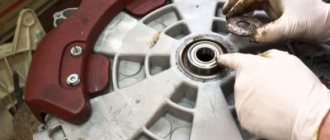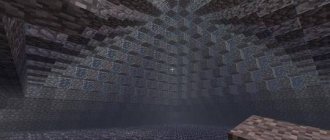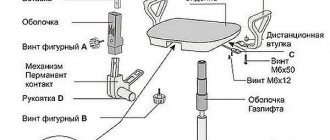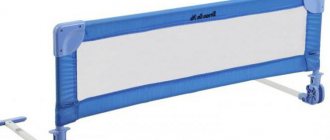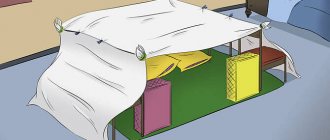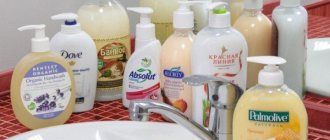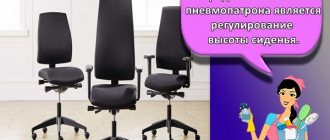Preparing to remove wallpaper
Before starting dismantling, it is important to prepare the workplace. The old coating does not always come off easily - you should have tools at hand. Safety precautions are no less important.
Taking Precautions
It will not be possible to remove the old coating in absolute cleanliness. Plaster, old paint, and dust may come off along with the wallpaper. To preserve furniture or floors, you need to prepare the room.
Preparing the room:
- Completely turn off the electricity in the room.
- Seal sockets and switches with masking or stationery tape.
- Take out the furniture.
- Lay film or newspapers on the floor.
- Seal the baseboards.
- If there is any furniture left, move it to the center and cover it.
- Leave a wet cloth at the entrance - it traps dust.
What tools are needed for dismantling?
Various equipment is used to remove old coating. The material matters - some wallpapers can be easily removed, others need to be wetted or treated with a special compound. But there is a list of basic tools.
You will need:
- Gloves.
- Putty knife.
- A bucket of warm water.
- Dishwashing liquid.
- Roller.
- Sponge.
- brush with metal bristles.
- Wallpaper removal.
- Iron.
Basic methods and means for removing old wallpaper
Each material has its own characteristics. How to remove it depends on the type of old canvas.
Using water
The simplest and most obvious method. By wetting, you can easily remove old self-adhesive, non-woven, paper and even vinyl wallpaper.
Tools:
- A bucket of water at room temperature.
- Roller.
- Construction spatula.
- Stationery knife.
Algorithm of actions:
- Add dish soap to the water and stir.
- Wet the roller and roll it over several strips of wallpaper.
- Wait - the material should soften. Use a spatula to pry the fabric at the joint and remove.
- Use a knife to remove small pieces from the wall.
Video
The full process can be seen in the video.
Mechanical method (steam and needle roller)
Using this method, you can easily remove almost any old coating. Having a steam generator is a great bonus at work. An alternative is an iron, but you will need a sheet or piece of cotton fabric.
What wallpaper is best to use for?
Suitable for paper, non-woven, vinyl wallpaper.
Inventory:
- Steam generator or iron with sheets.
- Container with water.
- A wallpaper tiger (also known as a needle roller), but a utility knife will also work.
- Putty knife.
How to remove wallpaper with steam:
- Go over the canvas with a needle roller.
- Wet the sheet, wring it out and lean it against the wall.
- Set the iron to maximum temperature.
- Iron the sheet several times.
- Pry it off with a spatula and quickly remove it.
Video
A life hack for removing wallpaper using a steam generator, as well as comments, can be seen in the video.
Special chemicals
If the wallpaper is tight, it is difficult to remove it using traditional methods. To save time and achieve the best result, special chemical solutions are often used. They are sold in construction supermarkets and help quickly remove old sheets.
What wallpaper is best to use for?
Suitable for non-woven, paper, washable and textile wallpapers.
Required equipment:
- Roller.
- Rubberized gloves.
- Basin with water.
- Wallpaper tiger (if not, then you can use a knife).
- Putty knife.
Step-by-step instruction
- Dilute the substance with water according to the instructions.
- Roll the walls with wallpaper tiger or stab them with a knife.
- Apply the composition to the walls with a roller.
- Leave the wallpaper to soak (the exact time is on the packaging).
- Simply pry the canvas with a spatula and tear it off.
Video
Details can be seen in the video.
Removing old Soviet wallpaper requires effort. Often they are glued to a layer of newspapers, under which there is old plaster. To begin with, you can try the traditional method - soak it with water and peel it off. If that doesn't work, use liquid.
Using a steam generator
If you have such a tool at hand, you can remove wallpaper from the wall quickly enough. To do this, you need to fill the container with water, wait for the device to heat up, bring the outlet nozzle to the wall and steam a small area. Before it cools down, you should start peeling off the material with a spatula. In particularly difficult cases, before removing the coating, it is recommended to damage it with a knife or a stiff wire brush so that the steam penetrates better into the wallpaper layer. An iron equipped with a steam function is used according to the same principle.
Removing wallpaper using a steam generator
It's a little more difficult to work with a regular iron. To do this, you need to moisten a rag with water, lean it against the wall and press it with a hot device. You need to hold the iron for a few seconds, remove it, and then quickly peel off the treated area.
Important! In this case, we are talking about working with heating electrical appliances, so you should adhere to safety precautions and use personal protective equipment, including a respirator.
After using these devices, tearing wallpaper off the wall will be quite easy. But steam will penetrate the surfaces and condense, so it is recommended to dry the walls before further finishing work.
Features of removal depending on the base and material
Different coatings have their own characteristics. This must be taken into account when choosing a removal method.
- Vinyl. They leave easily. It is enough to soak them in water and remove them after 20-30 minutes.
- Paper. They come off easily if they are glued with high-quality glue (universal “Methylane”). Remove with a knife or spatula. If they don’t come off, soak them in water or steam them with an iron.
- Non-woven. They have two layers, the top layer is removed. Ideally, it is better to steam old canvases or use a wallpaper remover.
- Liquid. They are afraid of moisture. To “unstick” them, just soak the wall; after a while, the coating will begin to peel away from the walls.
- Washable. Treated with a protective composition that does not allow moisture to pass through. You need to roll the walls with a needle roller, apply wallpaper remover, and remove after a while.
- Glass wallpaper. Easy to remove. You need to tear the sheets and fill the space under them with water. After 45 minutes they will start to lag behind. Or immediately fill it with a special liquid and easily tear it off.
- Self-adhesive. Old sheets come off easily; to speed up the process, you can moisten them with boiling water or use a hair dryer.
How to peel off wallpaper depending on the type of surface?
To remove old coating from walls, it is worth considering the type of surface. This will simplify the work and eliminate additional manipulations afterwards.
Drywall
The material is not resistant to moisture. Using water or a chemical composition will not work, as it will lead to deformation of the drywall. You can remove the old coating with steam (iron) or peel it off manually, using a knife. Work carefully so that the knife does not scratch the drywall.
Concrete walls
Concrete is not afraid of water and high temperature. You can remove the old coating in any way, you need to start from the material of the canvas. Paper ones can be easily removed with water; washable, textile, vinyl and others can be removed mechanically or with a chemical compound.
Wooden surface (plywood, chipboard, fiberboard, gypsum board)
Wood and plywood are afraid of moisture, and if the surface was not additionally treated before wallpapering, it will not be possible to remove the canvas using the soaking method. You can remove the coating from painted walls with steam. A win-win option is a composition for removing old wallpaper. It does not deform the wooden surface and will help remove the coating with minimal time. Or carefully peel off the wallpaper with a knife or spatula.
How to get rid of paper wallpaper on drywall
If you need to remove paper covering not from a regular wall, but from drywall, you need to handle the matter delicately. Drywall is covered with a thin paper layer that cannot be torn or scratched.
The best option in this case is to use a chemical remover for removing old pieces of wallpaper or hot steam. Experts here do not recommend using water. If the old wallpaper is very thin, smooth and tightly adhered to the drywall, you can prime it and glue new ones on top. It is better to use embossed foam vinyl for this, which will hide possible irregularities.
There are a lot of ways to remove old paper wallpaper from walls, and choosing the right one won’t be difficult. But if you have a very problematic apartment, and the old coating has simply merged with the wall, you can use the services of professionals. Today craftsmen have many special devices, and they can easily remove all the former beauty from the walls without damaging the surface.
How to remove old ceiling wallpaper?
Removing old wallpaper from the ceiling depends on the material. It is inconvenient to use an iron on the ceiling; the only option is to soak it with water or a chemical solution.
You will need:
- Stepladder or table.
- Water container.
- Putty knife.
- Roller.
- Masking tape.
- Film.
For equipment, prepare glasses, gloves, a hat, and old clothes.
Step-by-step instruction:
- Take out the furniture.
- Turn off the electricity, remove the chandelier (preferably).
- Seal sockets and baseboards with tape.
- Cover the floor.
- Moisten the roller in water or a special water-based solution.
- Get the ceiling wet.
- Wait 25-40 minutes until the canvases are soaked.
- Carefully pry the sheet with a spatula and remove.
- Do not turn on the electricity, wait for the ceiling to dry.
What to do if the wallpaper is glued with PVA or bustilate glue?
If the old coating is glued with PVA glue, it will not be possible to remove it with a spatula or scraper. Ideally, you need a device - a grinder or grinder with sandpaper attachments. The process is dusty, but the result is worth it.
If you don’t have such devices in your arsenal, a needle roller will help out. It takes a long time to scratch old wallpaper. Finally, treat the walls with wallpaper remover and tear them off.
To remove old wallpaper glued to bustilat, you need to work for a long time with a scraper, a wire brush, or sandpaper.
- If there is putty under the wallpaper, this method is not recommended, so as not to have to refinish the walls.
- For paper sheets, the steaming method is suitable.
- It is better to treat washable, vinyl and textile wallpapers with a chemical compound and then safely remove them.
Using sanders
It will be quite difficult to remove the coating using such devices. If the wallpaper does not stick tightly, it is better to use another method.
A sanding machine for removing wallpaper is used in particularly difficult cases.
- If you use a drill, you need to fix a circle on it to clean the surfaces; it usually looks like a metal brush. Then put on the respirator, turn on the device at low speed and lean the nozzle against the wall. Some people press the tool too tightly so that the coating can be removed better, but this is wrong - it’s more difficult to work this way and there is a risk of damaging the plaster under the material.
- Grinding machines are also used instead of drills; they are cheaper and simpler. You should work with them in the same way as with a drill.
- It is very difficult to work with hand tools. It may take several days to treat one room, so their use is only advisable in extreme cases.
How to rip off in problem areas?
The work will require more time and patience. This applies to stripping old wallpaper in a room with a suspended ceiling and behind radiators.
From under a stretch ceiling
You will need:
- Sharp knife.
- Wide spatula (preferable).
- Water or glue solvent.
Algorithm of actions:
- Place the spatula vertically on the ceiling.
- Using a knife, trim the canvas along the edge of the spatula.
- Apply the spatula again, moving it.
- In this order, trim the wallpaper at the border with the ceiling along the entire perimeter.
- Moisten the wallpaper with water or solution and remove.
Behind the battery
If the radiator can be dismantled, there will be no problems. For a stationary battery you will have to use a small spatula or knife. The result depends on the size of the radiator and how far your hand reaches.
Removing old wallpaper with your own hands without involving professionals should not be difficult. Manufacturers offer special chemical compositions that cope even with tightly glued old sheets. The main thing is to decide in advance on the removal method, prepare equipment and room.
Complex tasks
The greatest difficulty is caused by dismantling from difficult surfaces, such as ceilings, figured arches, drywall, plywood.
The difficulty lies in the lack of strength, which can be easily damaged by metal tools, and the inability to replace individual damaged areas without replacing the entire structure.
